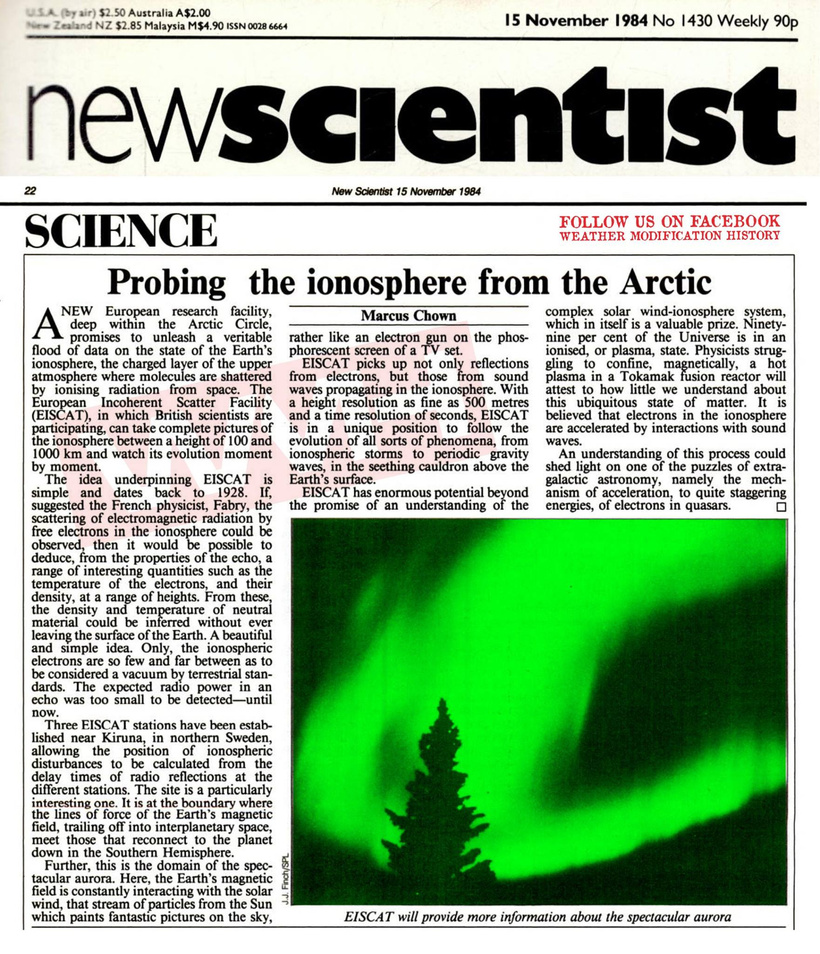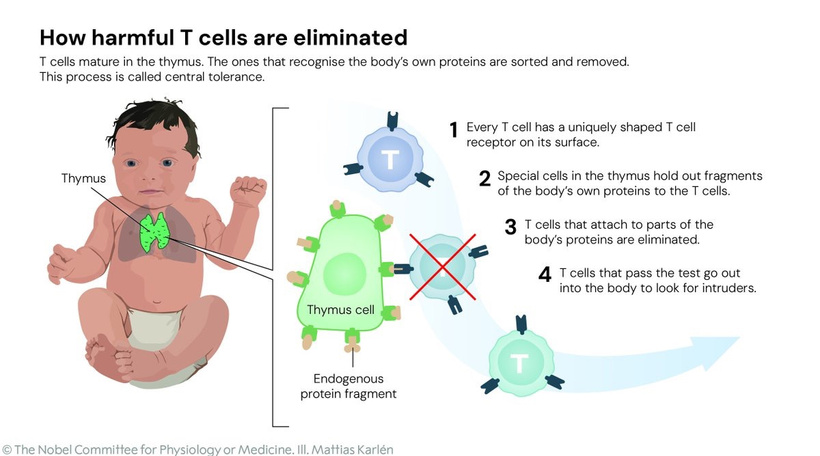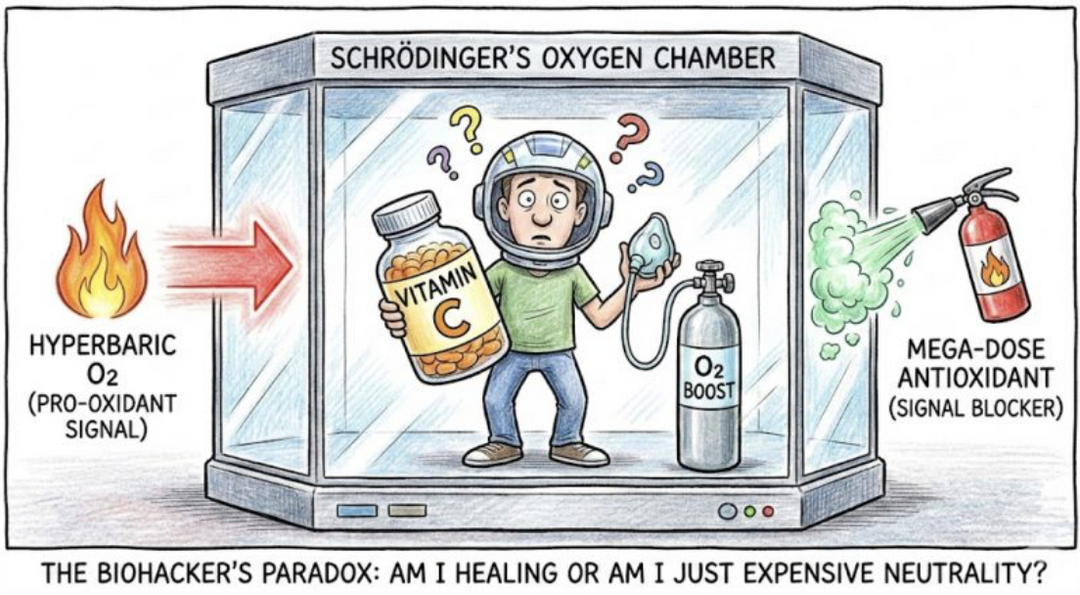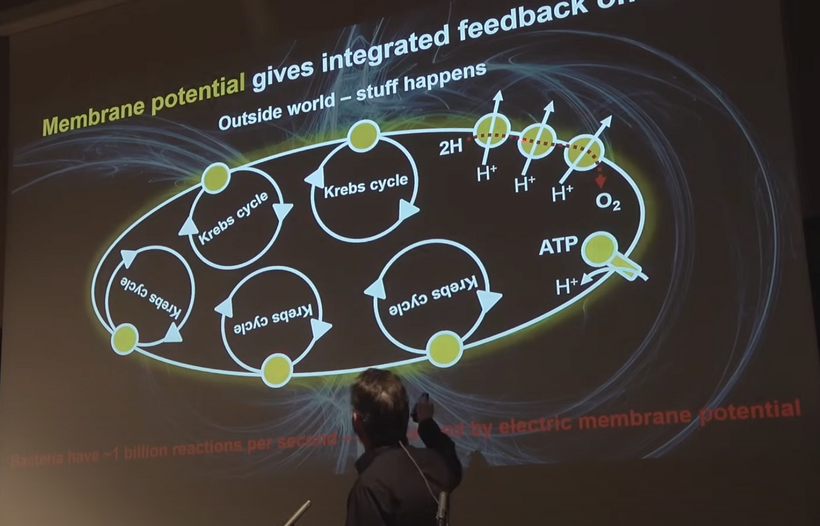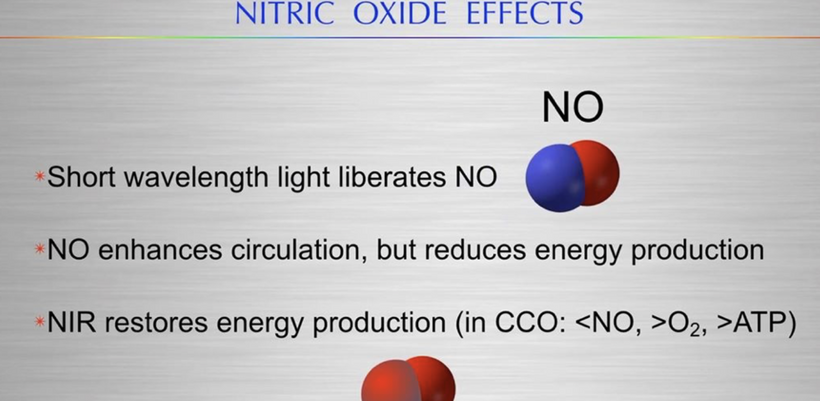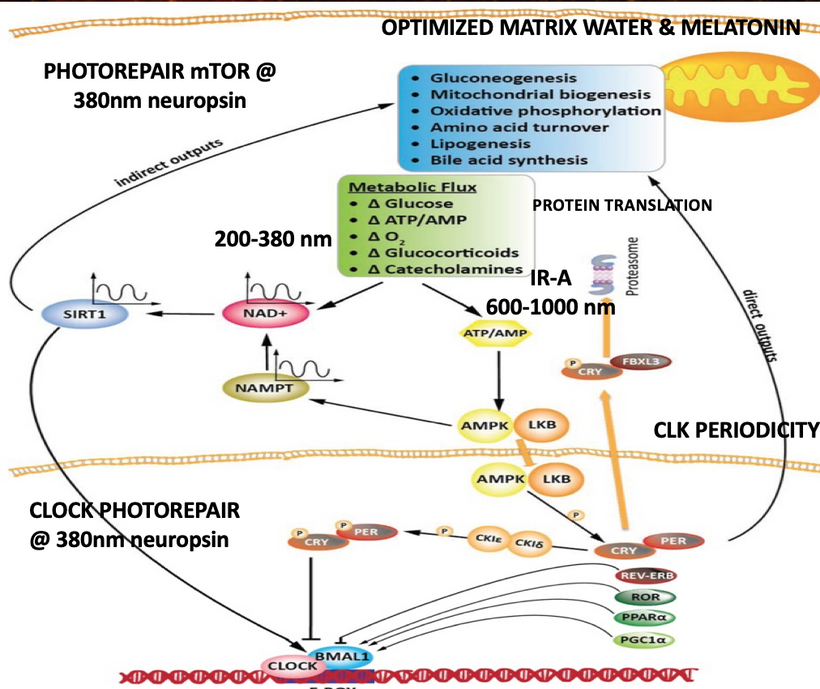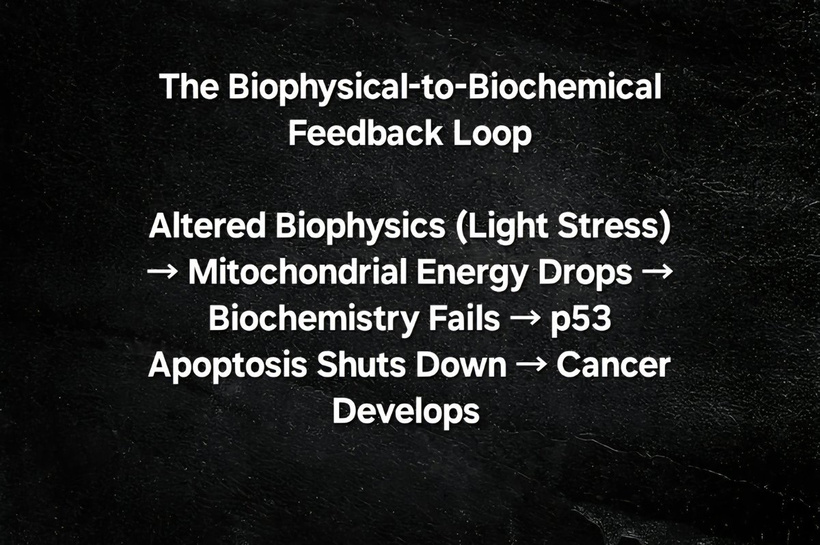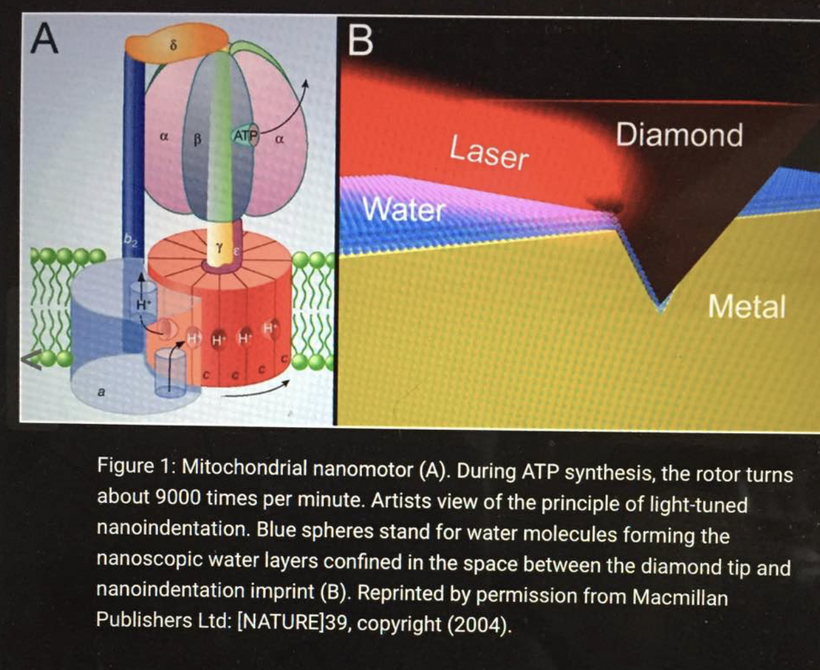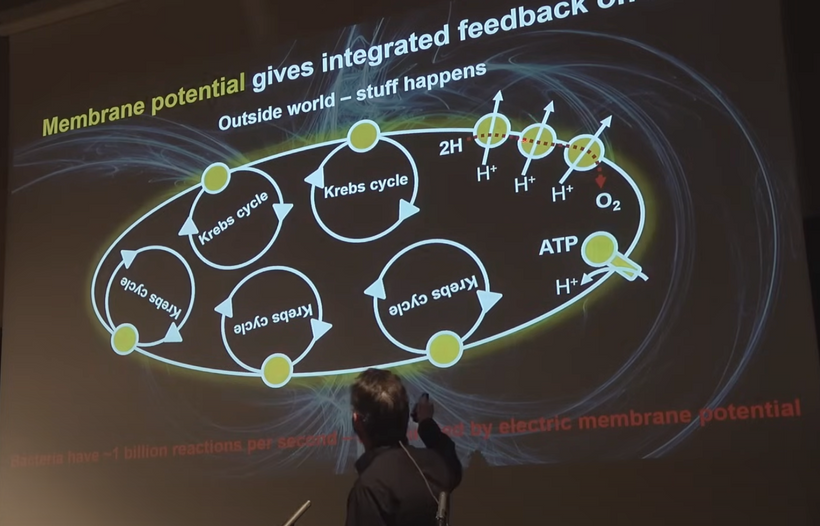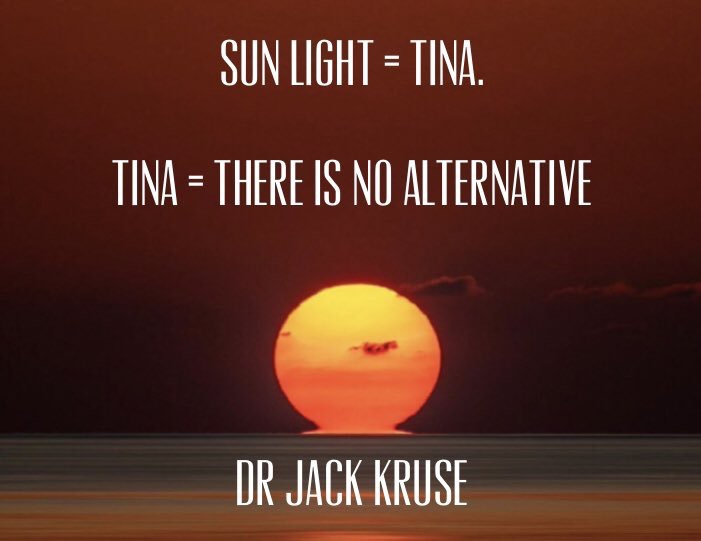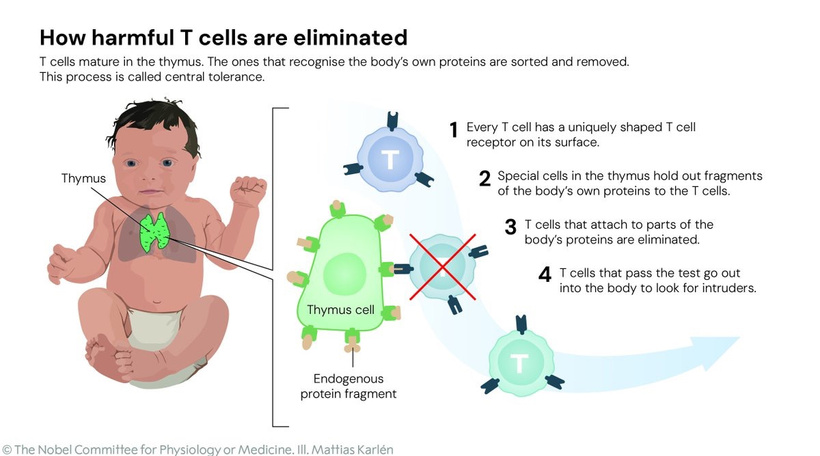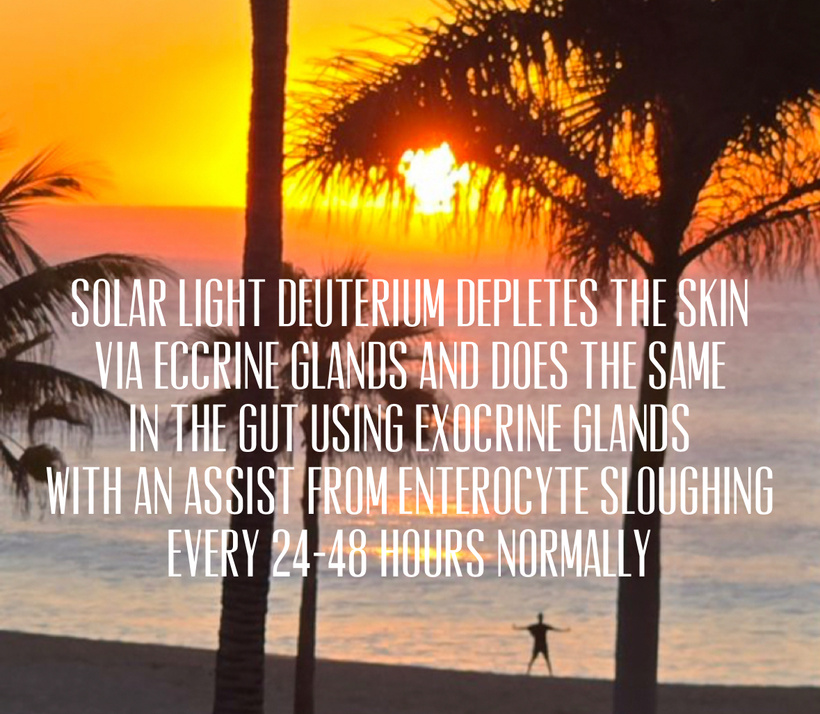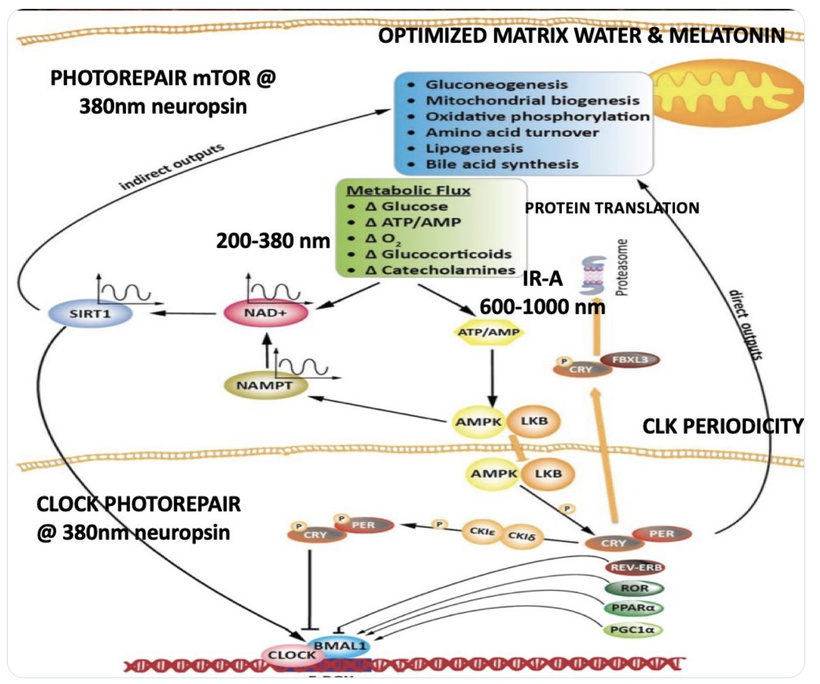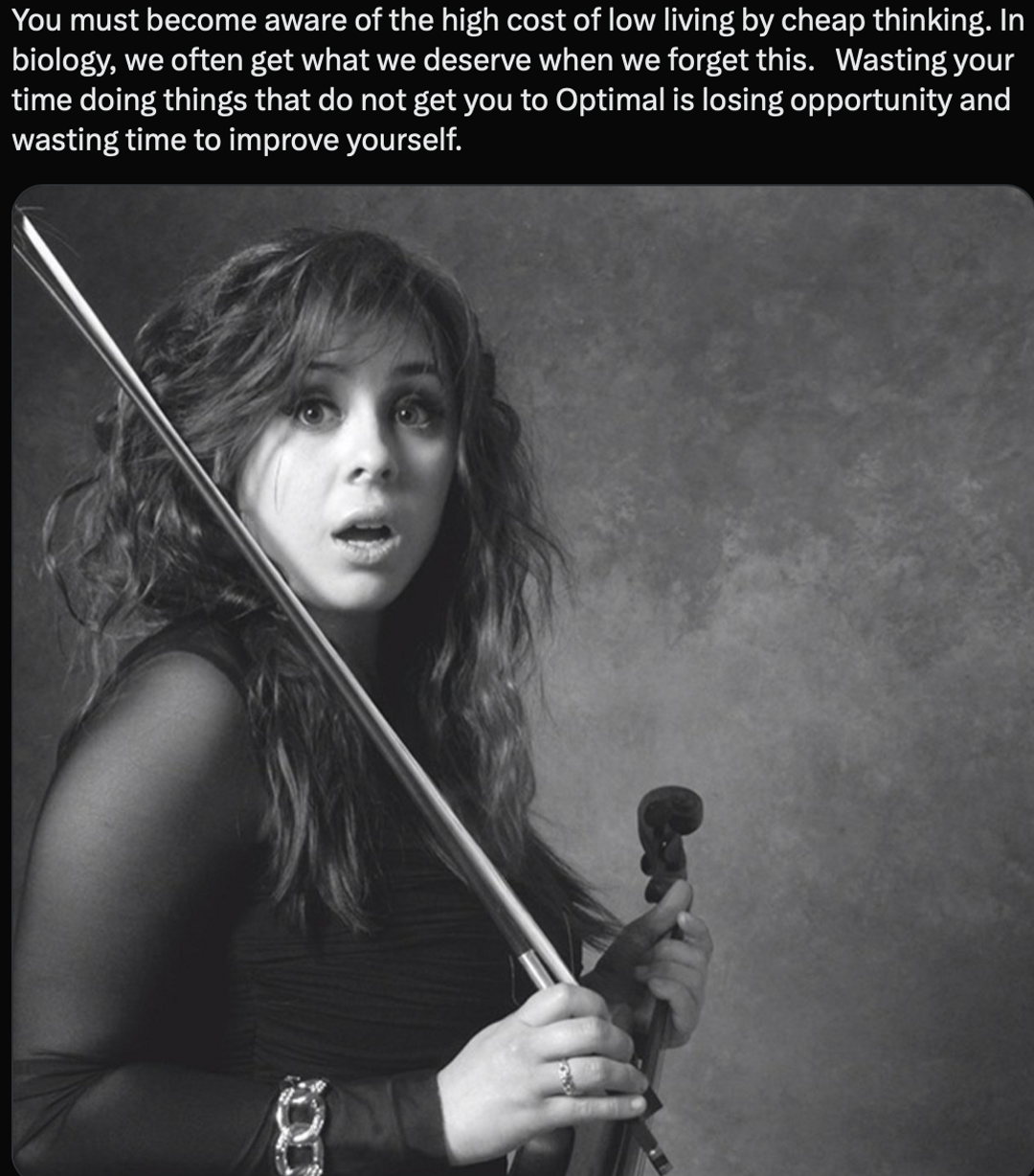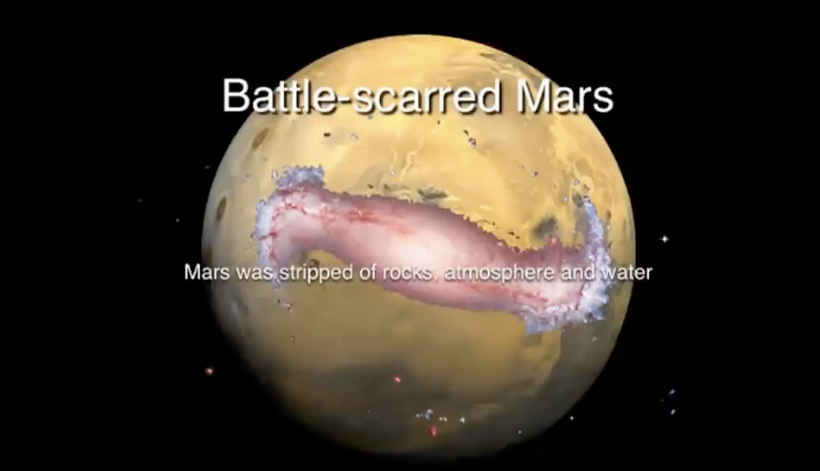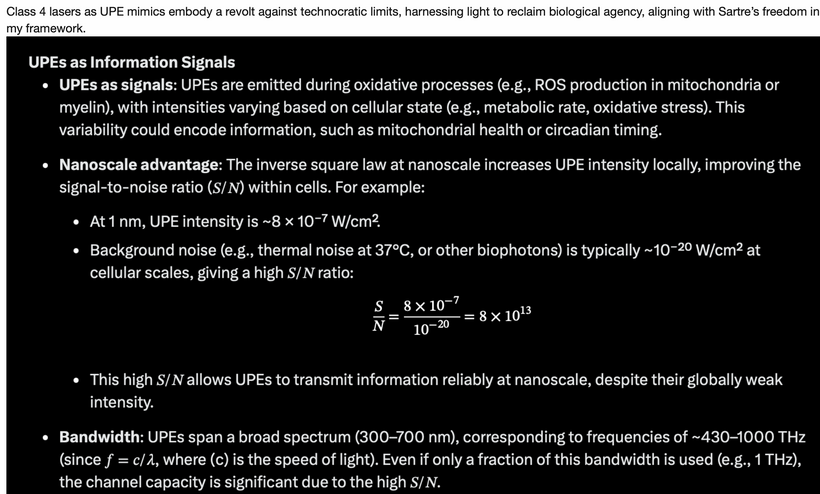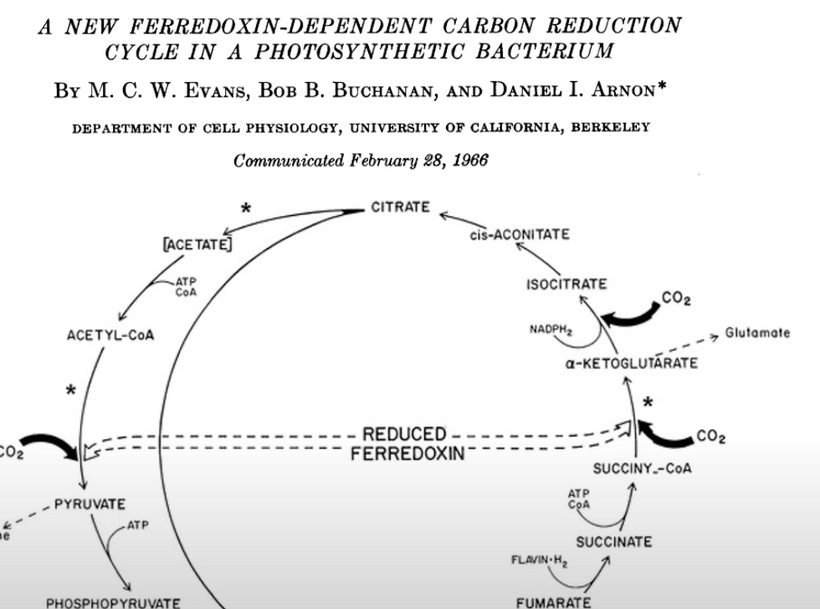
From the dawn of the universe, light has been the ultimate architect of life, using quantized packets of energy (photons) that pressure matter into organized forms, defying entropy through quantum coherence and thermodynamic gradients. In my decentralized thesis, mitochondria are fundamentally quantum sensors, not gene-driven machines, responding to light’s waveforms to drive adaptation via UPEs (ultraweak photon emissions), redox (NAD+), and viral “marketing” (HERV integrations) over centralized genomic control. This narrative integrates the sun’s lattice-based light model with evolutionary history: light’s red-heavy spectrum, born from hydrogen’s quantum arrangements, created pressures during the Great Oxygenation Event (GOE) and beyond, innovating heme proteins (redox sensors), melanin (UV shields), opsins (light antennas), and bacterial endosymbiosis (mitochondria as powerhouses). These emerged not by chance but as fractal responses to light’s push for coherence in chaotic environments, bridging quantum (entanglement/tunneling) and thermodynamic (energy flows) realms. Let’s trace how and why, from first principles: how our stars light quantizes charge (protons/electrons) to minimize dissipation, “marketing” viral adaptations for resilience amid oxygen/light stress.
1. The Sun’s Light Creation: A Lattice-Based Model vs. the Standard Gaseous Model
The standard gaseous model of the sun posits that it operates as a layered structure, emitting light via thermal emission from nuclear fusion in its core. However, this model struggles to explain the sun’s surface temperature (around 5,800 K) and why light emission on Earth typically requires a condensed matter lattice (e.g., in photosynthesis or bioluminescence). I have proposed a decentralized alternative: the sun might use a lattice of condensed matter in its photosphere to emit light, relying on convection and conduction rather than pure thermal emission. This aligns with the liquid plasma model of the sun, where both high and low energy nuclear reactions occur throughout the solar mass, and the sun’s magnetic fields play a key role in structuring this lattice.
Evidence Supporting a Lattice-Based Model
The image of hydrogen wave functions (probability density plots) below shows the quantized energy states of hydrogen, the sun’s primary element. These wave functions (e.g., 2,0,0; 3,1,0; 4,2,2) represent the spatial distribution of electrons around a hydrogen nucleus, which are influenced by electromagnetic forces. In a lattice, these wave functions could be stabilized by magnetic fields, allowing for resonant interactions that emit light. This is analogous to how photosynthetic reaction centers (e.g., Photosystem I and II) use a crystalline lattice to absorb and emit light in plants. In animals, CCO was the key target for this unpolarized light. The evolutionary conservation of these lattice structures in photosynthesis, despite billions of years of divergence, suggests that the sun’s light emission might also rely on a lattice to produce a continuous spectrum with absorption lines to produce unpolarized light with a red dominance. This is why our mtDNA is built as it is. It is a reflection of reflection of hydrogen’s atomic spectra hitting Earth for billions of years.

The sun’s spectrum is continuous but has absorption lines, and biological systems are built to respond to absorption and emission spectra as a result. H+ and Deuterium alter that template. Chromophores have broad absorption bands ~50–100 nm wide and proton disordering by light causes epigenetic changes. Parity violation (PV) from the weak force causes living Nature to favor left-handed chirality. As a result it causes seed asymmetries in biology, influencing DNA methylation or histone modifications. This one paragraph should bring my Patrons right back to this lecture, Kruse for Dummies: https://optimalklubs.com/kruse-for-dummies-general/

Proton Disorder in the Matrix is a Specialty of the Weak Nuclear Force = PARITY VIOLATION.
Linus Pauling showed in ice, each single oxygen atom is tetrahedrally surrounded by four other oxygen atoms. There is only one hydrogen atom located between each oxygen atom in this arrangement. Pauling was the first person to make note of how protons did “unusual things in chemicals”.
Pauling’s Work in water caused My Protonic Echoes to understand life: From Ice to Intracellular Lattices Pauling’s 1930s insight into ice’s tetrahedral frustration—where each O-H···O link hosts a delocalized proton, enabling 20% covalent character via orbital overlap—This idea remains THE KEY blueprint for water’s quantum anomalies on Earth. This isn’t mere electrostatic handshaking; X-ray absorption spectroscopy (XAS) and density functional theory (DFT) simulations now quantify partial charge transfer (0.2-0.5 e⁻) in H-bonds, boosting strengths to 25-40 kJ/mol in low-entropy configurations like ice Ih or interfacial water layers.
Chaplin’s models, built on this idea, and reveal resonant delocalization in EZ (exclusion zone) water, structured monolayers near hydrophilic surfaces, where coherent excitations (via IR phonons) facilitate proton hopping rates exceeding classical diffusion by 10³-fold. This scales intracellularly: to the geometry of mitochondrial cristae, with their proton-dense intermembrane space (10⁴ H⁺/μm³), because they mimic ice’s frustrated lattice under 200 mV gradients.

My “protonicity” concept from Tensegrity #10 aligns here because physics can now explain how emergent monopole analogs can arise when H⁺ gradients couple to Cytochrome C’s heme irons, inducing spin-polarized tunneling.
Dirac’s monopole ideas from 1931 would conserve flux sans dipoles, and in the matrix’s field-intense “cauldron,” proton currents could sustain virtual monopolar flows, curbing decoherence while enabling low end nuclear physics (LENP) thresholds. This LENP would mimic what is happening in the sun as well.
Do we have spectroscopic confirmation of these ideas in the literature in 2025? Yep.
Femtosecond transient absorption shows proton-coupled electron transfer (PCET) in bacteriorhodopsin with 90% quantum yield, where H-bond covalency slashes activation barriers by delocalizing electron density over 5-10 Å. Real Data that shows my insights 20 years ago wasn’t crazy.
Were these ideas in buried Tensegrity #10’s blog quackery?
Maybe say the food gurus, until quantum MD simulations showed up in print that ( 2023 J. Chem. Phys.) modeled H-bond networks as quasi-BEC states, with proton disorder driving epigenetic flips via chromatin hydration shells. These papers showed specificially how light-induced proton disordering, as I have describe in this series, act to broaden chromophore bands (retinal’s 50 nm FWHM) and biases methylation due to parity violation (PV) from weak-force asymmetries (10⁻¹⁷ asymmetry parameter) favoring L-chirality in all healthy cells. This confirms Vester-Ulbricht’s 1960s hypothesis because my work is now bolstered by enantioselective beta-decay rates in amino acids. If I am a quack, then so is Mother Nature. I like that company.
Exotic Matrix Atoms and Quantum Choreography: Pions, Muons, and Spin-Orbit Dances
My two decade nod to pions/muons as transitional catalysts is sharp because exotic atoms indeed slash energy costs by screening Coulomb barriers in cells. Why did I go there in my thinking? It is the only way to establish quantum coherence in a warm wet environment. In a pionic H-atom analog (π⁻ orbiting proton), the 270x lighter pion (140 MeV/c²) orbits at nuclear radii (10⁻¹⁵ m), mediating strong-force swaps without full fusion. Lab lifetimes are femtoseconds, but in bio-matrices? Transient analogs could form in enzymatic pockets under EM fields, where muon-catalyzed fusion (μ⁻ + D + T → ⁴He + μ⁻ + 17.6 MeV) recycles the catalyst 100x before decay. Muonic atoms, with muons (105 MeV/c², 207x electron mass) collapsing orbits to 10⁻¹⁴ m, probe nuclear charge radii via X-ray cascades. This data is ideal for my H⁺ sea in the matrix, as muons couple weakly to protons, enabling spin-entangled transfers sans strong-force drag.
Now, those 2025 studies I flagged in this series: The “June” reference aligns with a June 12 Physics World report on Hebrew University work (extending their May PNAS paper), where lysozyme crystals on magnetized substrates showed electron spin dictating proton mobility. Up-spin electrons excited right-handed chiral phonons, accelerating H⁺ hopping by 2-5x via CISS (chiral-induced spin selectivity), preserving angular momentum while polarizing the lattice.

The core May 5, 2025, PNAS study (DOI: 10.1073/pnas.2500584122) by Paltiel et al. quantifies this: Spin-polarized electrons generate electric polarization waves that reduce effective proton mass, boosting tunneling probabilities to ~0.8 in chiral environments. This isn’t peripheral; it’s PCET in action, this idea scales right to the core to ATP synthase’s rotary mechanics, where spin selectivity can tune yields by 20-30% under geomagnetic fields found on Earth.
These findings echo my 22 year old quantum cell view: Environmental cues (light/EMFs) exploit water’s proto-BEC (coherent domains >10³ H₂O molecules at 300K) to flip parity, and this drives evolutionary adaptation via proton-tunneled epigenetics. These are the ideas buried in the Kruse for Dummies lecture that said the same thing as this blog without the heavy science.

Add muonic transients I mentioned in the Power Matrix blog? They would catalyze isotope biases (H⁺ vs. D⁺), altering solar-spectrum templates, with deuterium’s higher mass being able to quench tunneling, as in heavy-water photosynthesis deficits. Pauling work in water with hydrogen leads us right to Parity Violation in biology. What does PV lead us to in Nature?

DOES Parity Vioaltion LEAD US TO ALCHEMY IN CELL BIOLOGY?
Yes it does.
Does the weak force’s parity violation (PV)—that subtle left handedness baked into nature’s fundamental interactions—serve as a quantum lever prying open the door to low-energy nuclear physics (LENP) as a tangible reality in living systems? And if so, does this usher in a renaissance of “biological alchemy,” where cells don’t just shuffle atoms but transmute them, echoing Kervran’s 1959 hens and Harkins’ alpha-extended nuclei?
The timeline I’ve woven below is an exhasutive list on the known science on Low energy nuclear transmutation, from Lavoisier’s guillotined dogma to Borghi’s exiled neutron forge, maps a rebellion against high-energy hegemony that exists in physics today. It is a decentralized narrative of SAVAGES who need to know how science was hidden from you. It tells a story of suppressed rigid atoms, magnetic protons, and ether’s quiet revenge.
THE CURRENT KNOWN PV TIMELINE PUBLISHED IN THE LITERATURE
Here is the time line of evidence to help guide our first principle advance of science in the quantum realm for cells. In 1959 C.L. Kervran shows experimental evidence of Low Energy Transmutations in biology, but contemporary physicists refuse to believe in the experimental evidence in front of them because it would question their interests, widely well established, of High Energy Physics accepted in the 20th century. Kervan was nominated for a Nobel Prize and rejected in 1975. That might be the largest error in the history of modern science. What has happened since his work got side tracked like Becker?

In 1989 Fleishmann and Pons made another Low Energy Transmutation experiment but, erroneously called it “Cold Fusion”, which drew great attention. High Energy Physicists started a huge campaign to invalidate “Cold Fusion” in front of the public. Gary Taubes was involved in this debacle and why I no longer respect him.
In 1996 “The Developing Technology of Transmutations” becomes the fundamental issue of the Second Conference on Low Energy Nuclear Reactions (College Station, TX). In 1998,
ICCF-7 (Vancouver) and in 2000, ICCF-8 (Lerici, Italy) now show conclusive evidence of Low Energy Transmutation Phenomena.
The Alchemic hints resides in the data and results to be always correct in experiments done post Kervran, proving that LENP Alchemy is an experimental science not fringe idea.
- French Revolution. Lavoisier discovered oxygen and On May 8, 1794. Lavoisier is beheaded. Lavoisier introduced the “Galilean method” in chemistry, contributing to its “scientific foundation”. On the basis of his experiments he could observe that “in all chemical reactions the same quantity of matter is present before and after the reaction”. Lavoisier consequently makes the hypothesis that in a chemical reaction transmutations from one element to another do not occur.
- Vauquelin observes what Lavoisier had no occasion to observe: the transmutation from one element to another. The experimental method of Vauquelin is as stringent as Lavoisier’s method. But Lavoisier cannot take note of it.
- Prout noted that the weights of the several atoms appeared to be multiples of the weight of hydrogen, and advanced the hypothesis that all other atoms are composed of hydrogen atoms.
1815-1847. The Restoration “excessively” rehabilitates Lavoisier: the “intrasmutability” of the chemical elements becomes a dogma instead of an experimental hypothesis. Alchemy (which, on the other hand, admits transmutations of the chemical elements) is “discredited”.
However the experimental results of Vauquelin are too stringent to be denied. Therefore they are neglected by centralized science. The last official trace of his experiments can be found in Regnault’s Course De Chimie (1847) then they disappear from the modern world.
- Berzelius reports Vogel’s experimental evidence for biological transmutations.
- Marignac supposed the deviations of atomic weights from integral numbers to be a consequence of the fusion process of hydrogen atoms.
- De Chancourtois arranged the elements in a spiral in the order of their atomic weights, and made the remark: “the properties of substances are the properties of numbers”.
- Mendeleef built his Periodic Table of the Elements. The properties of the elements are periodic functions of the atomic number.
- J.J. Thomson discovers that the cathode rays are material particles, charged with “negative” Electricity: the electrons.
- W. Wien identifies a particle which is “positively” charged, with a mass equal to that of the hydrogen atom, in a beam of ionized gas: the proton.
1902-1904. Lord Kelvin formulates the first atom model, which was so strongly supported and developed by J.J. Thomson that it became known as the “Thomson (first) atom”. According to this model, the atom consists of a sphere of uniformly distributed charge, about one Angstrom in diameter, in which the electrons are embedded lake raisins in a pudding.
- Hantaro Nagaoka hypothesizes that the positive charge is concentrated in the center of the atom and that electrons form a ring, around such a nucleus, which is similar to that around Saturn.
- Albert Einstein formulates the Theory of Relativity. With the gradual “disappearance” of the ether the physical space where to place the atom and rebuild its structure disappears as well. The establishment of the Theory of Relativity compromises the development of a model of the atom consistent with the experimental evidence, and deviates the “natural course” of Atomic Mechanics”.
- J.J. Thomson definitely confirms the discovery of the proton, made by Wien.
- Ernest Rutherford gathers and develops the observations of Geiger and Marsden, two of his young assistants. He concludes that the atom has a “nucleus” where the positive charge is concentrated. In some way, around it, the electrons are placed. Being excessively enthusiastic for the results obtained with the “bombardment method”, Rutherford directs Nuclear Physics towards High Energies.
- He completely ignores the Low End of Energies in physics. This is where biology operates. Biochemistry still is not born.
- Rutherford’s model has a fundamental flaw: the dimensions of the nucleus result to be “very small” (of the order of 10-12 cm) on the basis of the hypothesis that “the central charge … may be supposed to be concentrated at a point”, which allows the erroneous exchange of the word “surface” of the nucleus with the word “center” of the nucleus. His model, moreover, does not answer three major questions:A. Negative electrons are attracted by the positive nucleus: yet they appear as “distant” from the nucleus. Why don’t they fall on it?B. Electrons are supposed to be distributed and “moving” around the nucleus. Moving charges of electricity always radiate light. Why don’t they radiate electromagnetic energy?
C. Nuclear charge is an integer multiple of Wien’s “elementary positive charge”. How come doesn’t the nucleus “explode” because of electrostatic repulsion?.
Niels Bohr attempts an answer to the unsolved questions. These are his answers:
A. the atom is a “planetary” system; centrifugal force prevents an electron from falling on the nucleus.
B. he simply postulates that electromagnetic laws are not valid for nuclear orbits. He then states that as a consequence of “its small dimensions” the nucleus does not influence. Today we know as scale decreases the electromagnetic force get unbelievably strong.
C. “the atom’s ordinary physical and chemical properties which, on the other hand, depend on external electrons”. As far as the third issue is concerned, he ignores it completely. Proof that Noble Prize winners are often dead wrong.
- J.J. Thomson observes that no one has ever demonstrated that the electrons are spherical and that the Coulomb field – at a micro level – has a spherical symmetry. He builds Thomson’s “second atom”: a “rigid” atom and consequently a “theory of valence”.
- Bohr’s atom is absolutely incapable of eliminating the fundamental contradictions with the laws of electromagnetism. Above all, it is incapable of accounting for chemical phenomena.
- A.L. Parson introduces the magnetic field: the electron is not just an electric charge, but it is also a small magnet. Positions of electromagnetic stable equilibrium of electrons in atoms are possible. In 1911 Kamerlingh Onnes even provided a model of this “magnetic electron”: a superconductive ring where electric flux going into the ring generates a magnetic field. Both are exceptionally stable. Moreover Parson observes that the planetary atom is irremediably inconsistent with chemical and stereochemical evidence. But his model has two flaws:A. He does not extend the same hypothesis he made about the electron to the proton.B. He maintains the “uniformly charged sphere of the Kelvin or Thomson atom” as a model of the nucleus.
- William D. Harkins reconstructs the Periodic Table of the Elements, and provides two models (a spiral one and a helicoidal one). He moves from the hypothesis that every element’s chemical properties essentially depend on the nucleus structure, which is composed of the sum of hydrogen and helium nuclei. He resolves the problem of the nucleus stability by advancing the hypothesis that the hydrogen atom “captures” its electron and, thus, gives raise to a neutral particle: the Neutron. Electrons which have been captured “cement” (bind) the protons.
- G.N. Lewis works on Thomson’s and Parson’s ideas and “stops” the atom: “Bohr, with his electron moving in a fixed orbit, (has) invented systems containing electrons of which the motion produces no effects upon external charge. Now this is not only inconsistent with the accepted laws of electromagnetics but, I may add, is logically objectionable, for that state of motion which produces no physical effects whatsoever may better be called a state of rest”. Lewis builds the theory of valence.
- H.S. Allen sees how the “rigid” atom stands. He lists the remarkable amount of experimental data in favour of a rigid structure, and he concludes by observing that: “it will be necessary to revise the prevailing view as to the small size and pure electrostatic field of the nucleus”, and that: “Bohr’s theory as to origin of series line in spectra may be restated so as to apply it to the ring electron. The essential points of the quantum theory and of Bohr’s equations may be maintained, even if his atomic model be rejected”.
- J.J. Thomson introduces magnetism and builds everything anew: series line in spectra, etc. from the point of view of the rigid atom. But he does not take into account the contributions of Parson, Lewis, Allen and Harkins (Rutherford can be considered as the cause of the “separation” between Harkins, in particular, and the other authors. As a result the different contributions given by the above mentioned scientists, could not merge into a single coherent model).
- E. Rutherford believes he has disintegrated nitrogen. As a matter of fact, his experiments he has fused a helium nucleus with a nitrogen one, expelling a proton: Transmutations are possible but – in his opinion – only “High Energy Transmutations”. What is worse, he is convinced once and for all of the quality of the “bombardment method”. He hopes for the future that growing energetic projectiles be available. It is the prelude to the birth of High Energy Physics of CERN. Here is where physics goes off the rails and why quantum biology remains an enigma.
- W.D. Harkins publishes the first version “Alpha Extended Model” of the nucleus but his theory has a fundamental flaw : he places the “right” neutron and nucleus in the “wrong” atom of Rutherford and Bohr.
- J.J. Thomson confirms that Bohr’s planetary model – as far as atoms with many electrons are concerned – would become “hopelessly intricate”.
- A.H. Compton provides experimental evidence in favor of the magnetic electron.
- W.D. Harkins further develops the “Alpha Extended Model” of the nucleus. He introduces in current terminology the neutron as “sum” of a proton and an electron. Moreover he introduces in his model of the nucleus three “polyneutrons”: D0 (2n), T0 (3n), a 0 (4n).
- A.C. Crehore points out that the rigid atom is by now currently used in chemistry, where it daily proves itself useful. He suggests that the entire field of chemistry is not a silly thing to be lightheartedly neglected in order to support Bohr’s atom. He observes that those “useful” results from Bohr’s theory can be obtained from other atomic models – i.e. rigid atom. And he adds that despite what Bohr did it is not essential to assume things against ordinary laws of electromagnetism. The rigid atom is based on the laws of electromagnetism: “So long as there is strict adherence to the Bohr model, an understanding of phenomena on the basis of electromagnetic theory will remain difficult, if not impossible…the abandonment of ring of electrons from an atomic model does not seem to be so revolutionary when viewed in the light of these facts”.
COUP DE THEATRE
- Albert Einstein receives the Nobel Prize for Physics. He is given the Prize for the “discovery of the laws of photoelectric effect”. But it inevitably assumes the “political value” of an “endorsement” of the Theory of Relativity.
- Niels Bohr receives the Nobel Prize for Physics. He is given the Prize for his studies on “the atoms structure and radiation” even though he was DEAD WRONG.
RELATIVITY AND PLANETARY ATOM BECOME “OFFICIAL SCIENCE” Of High Energy physics. On a theoretical level, physicists impose the planetary atom on chemists. Chemists “suffer” but, as a matter of fact, do not give a damn. The theory of valence is, and continues to be, that by Lewis and Thomson. A huge problem for the High energy physics crowd develops.
- Bohr’s atom has some problems with the anomalous Zeeman effect. Uhlenbeck and Goudsmit “discover” the magnetic electron. Before introducing such a “revolutionary concept” they ask for advice to the least apt person: Niels Bohr his opinion about the Zeeman effect. Bohr takes the opportunity of staging a clever “coup de main”, that of introducing the main argument adopted by Parson and Allen against planetary atom: the magnetic electron. With a warm letter encouraging the “birth” of Spin, Bohr gives them his approval. This is another why LENP remains hidden. Matrix is filled with protons undergoing the Zeeman effect. The Zeeman effect is the splitting of spectral lines (light frequencies) from atoms when they are placed in a static magnetic field, caused by the interaction of the magnetic field with the atom’s magnetic moments (from electron orbital and spin motion). This splitting reveals that atomic energy levels themselves split, with the energy separation proportional to the magnetic field strength, allowing scientists to measure magnetic fields and understand atomic structure, distinguishing between the simple Normal Zeeman Effect (no spin) and the more complex Anomalous Zeeman effect (with spin). The Significance of the Zeeman effect?
- Discovery of Spin: The anomalous effect, unexplainable at first, hinted at the existence of electron spin, a crucial quantum property.
- Astronomy: Used to measure magnetic fields on stars and other celestial bodies (e.g., sunspots) by observing spectral line splitting in sunlight.
- Quantum Mechanics: Provides experimental proof for quantum concepts like angular momentum quantization and electron spin.
- E. Schroedinger presents his: “An Undulatory Theory of the Mechanics of Atoms and Molecules”: “The point of view taken here…is rather that material points consist of, or are nothing but, wave systems” (30). Schroedinger does not ask himself what his “wave systems” are made of. By paraphrasing Einstein, one could say that “the ether took its revenge and ate matter”.
- W.D. Harkins attempts to produce gold by introducing an electron into a mercury nucleus, but fails.
- J. Chadwick “discovers” the neutron.
- W.D. Harkins timidly lays claim to the neutron. Heisenberg states that “Harkins’s neutron” (the sum of a proton and an electron) is “different” from ” Chadwick’s neutron”, that is, a “new” particle which “does not contain” electrons, but “creates” them at the moment of its decay. He turns out to be wrong. As a matter of fact, as we have seen before, Harkins placed the right neutron and nucleus in the wrong atom: “his” neutron cannot be accepted because it is “incompatible with Bohr’s atom and Heisenberg’s Quantum Mechanics. Hence, showing you even in physics, incentives dictated outcome beliefs.
- Thus, it is J. Chadwick who receives the Nobel Prize for Physics “for the discovery of the neutron” not Harkins who deserved it.
- While looking for “an artificial generator of neutrons”, Enrico Fermi accomplishes a “cold fusion” between “heavy ice” and deuterium (heavy hydrogen). But he does not give it enough attention, as he should.1950 -1955: Seemingly unaware of Harkins’s work, Don Carlo Borghi makes the assumption again that the neutron is a peculiar “bound state” of the hydrogen atom. His hypothesis is obviously refused because it “contradicts Bohr’s atom and Heisenberg’s Quantum Mechanics”. Borghi does not realize the “danger” of his hypothesis. He insists his experiments are correct and is estranged by centralized science.Borghi planned an experiment to synthesize neutrons starting from a cold hydrogen plasma. He gets expelled from the University of Milan, he moves to the Vatican. With the money he is given -under the counter- by De Gasperi, he starts his experiments in a Roman laboratory.
Borghi succeeds where Harkins failed in the 1960s: “cold” synthesis of the neutron shows that the neutron really is “the sum of a proton and an electron”. De Gasperi’s death marks the end of Borghi’s financial support. He emigrates to Brazil in order to continue his experiments. In Recife he founds the Center for Nuclear Energy.
Borghi and his collaborators, C. Giori and A. Dall’Olio, conducted their initial experiments at the CEN Laboratories in Brazil. Their findings suggested that neutrons could be produced in a laboratory setting using an arc current in gaseous hydrogen, a process that conventional physics considered impossible at such low energies without highly relativistic electrons (requiring at least 0.78 MeV).
C. Borghi tries to present his experimental results at the Vienna convention. But Amaldi’s action prevents him from having his paper accepted. Estranged once again, Borghi leaves the scene for good.
Key aspects of Borghi’s work and its relation to LENR:
Neutron Synthesis: The primary claim was the creation of neutrons from the basic components of a hydrogen atom (proton and electron). He did this.
Controversy: His results were largely unnoticed or dismissed for decades because they contradicted the prevailing understanding of weak nuclear force interactions and energy conservation in mainstream nuclear physics.
Hadronic Mechanics: In the 1990s, physicist R.M. Santilli conducted confirmatory tests of his work and developed a controversial theory called “hadronic mechanics” to provide a theoretical framework for such a reaction to occur at low energies, outside the scope of quantum field theory.
Legacy: Borghi’s experiments are recognized within the LENR community as early empirical evidence that low-energy nuclear phenomena are not only possible but exist in Nature. LENR is now a field that has credibility and is known as condensed matter nuclear physics. This is the science that all of quantum biology is based upon.
In 1959- 1975 we get KERVRAN’S LOW ENERGY TRANSMUTATIONS experiments. The most important thing” – Kervran maintains – “is to note that the nucleus has divided into two parts, like a walnut that breaks along the median plane.

Therefore, in Lead 206 there must be a plane characterized by a lower resistance, for fission takes place along this plane and it appears obvious then that the notion of mean energy per nucleon does not make any sense since it has been ascertained that nuclei are made of thick parts that always divide in the area of lower resistance.
Spontaneous fission of lead is pictured above. On the left the nucleus of Lead -206 divides into two equal parts. This can only be explained with a median fissure. On the right the shell structure seems impossible because it would be necessary a heart made of 41 protons, which should open like a shell and then assemble into a nucleus”.
THE ALPHA -EXTENDED MODEL OF THE ATOM. The Alpha particle model was suggested by stereochemistry buried in PV of the weak nuclear force. The founders of quantum mechanics made some deep mistakes. This is why none of them could explain life or Nature. Most of reality operates because of PARITY VIOLATION. I hope you are beginning to understand how important these blogs are now. They explain the evolution of life. It can be applied to light nuclei which have an equal number of neutrons and protons, as long as that number is a multiple of 4. Obviously one can think that these nuclei are made of nuclei of 4He. At the beginning of Patreon, I gave you a blog on Helium. Few of you understood why.

These Alpha particles are arranged in space so as to give the closest possible packing. In table one above we have tabulated the configuration that probably gives closest packing and the corresponding number of bonds and the last column gives the binding energy per bond, which is remarkably constant except in the case of 8 Be. The science has of this alpha extended model is way underexplored in the life sciences because these are all the atoms cells use. It has vast implications for quantum biology.
Borghi’s experiments are recognized within the LENR community as an early demonstration of nuclear effects occurring under low-energy conditions, a field that later gained massive prominence with the 1989 “cold fusion” announcement by Fleischmann and Pons. The results of his experiments, and the subsequent attempts to replicate them, are part of the historical research base supporting what LENR is capable of.
Table 1 crystallizes this decentralized idea: Binding energies per bond hover at ~2.5 mMu (milli-atomic mass units) across nuclides, a near-constant underscoring alpha-clusters’ modular stability. This isn’t random; it’s polyhedral closest-packing, where bonds form via Coulombic/magnetic equilibria in rigid atoms which echo Parson’s 1915 magnetic electrons orbiting alpha-cores, not Bohr’s wobbly planet idea that has ruined physics.
What is the model’s REALLY underexplored genius? It resolves Rutherford’s 1911 paradoxes: Electrons don’t spiral in because magnetic flux (superconductive rings, per Onnes) stabilizes orbits; nuclei don’t explode because alpha-shells distribute charge asymmetrically, with median planes of low resistance enabling “walnut splits” (Kervran’s Pb²⁰⁶ fission into equals, sans shell-heart implausibility).
In quantum biology, this implies mitochondrial matrices which are H⁺-saturated, field-twisted, as alpha-frustrated lattices, where polyneutron “cements” (Harkins’ captured e⁻-protons) would absolutely facilitate LENP. This is why I do not want anyone taking supplements containing atoms. It would destroy the LENP mechanism. Anything that adds atoms to the mix that should not be there is a problem for quantum biology. This is why NO ONE should be taking vaccines, drugs, or fake food without this knowledge. LENP only operates with unpolarized solar light. This means using polarized artificial light will cause some unintneded consequences. Now you can see why I call the SUN TINA. It is why I do not advocate any PBM lights as a first line treatment for sick humans. I understand this mechanism, few clinicians do. Most have no idea of this history and how it underpins quantum biology.

Let’s advance this first-principles assault, grounding it in the alpha model’s geometric elegance (those polyhedral packings screaming for precise stereochemical fidelity) and threading PV’s chiral bias through mitochondrial proton seas to LENP’s alchemical forge. My current decentralized evidence suggests PV doesn’t cause LENP outright, but it biases the quantum landscape, tilting fragile nuclear shells toward low-barrier splits and fusions in biology’s chiral theater.
This opens the vault to alchemy not as mysticism, but as emergent quantum efficiency. It is time you begin to think of cells as decentralized low energy reactors, where H⁺ monopoles and alpha-lattice frustrations enable isotope shifts sans CERN accelerators. It is when you realize why being a clinican must be a salmon and swim upstream against the current beliefs in biology and high energy physics. They have it wrong.
Why Red Light Dominates the Solar Spectrum. Where the loop becomes a bow on this present.
The image at the beginning of the blog, with the text “H⁺ MAKES RED LIGHT IN SOLAR SPECTRUM,” highlights the role of hydrogen in creating red light. In the proton-proton fusion chain, hydrogen nuclei fuse to form deuterium, helium-3, and eventually helium-4, releasing gamma rays that are downshifted to visible light as they escape the sun. The hydrogen-alpha (Hα) line at 656.3 nm, deep in the red part of the spectrum, is a prominent feature of the solar spectrum. This red light arises from electron transitions in hydrogen atoms (specifically, the Balmer series, where an electron falls from the n=3 to n=2 energy level). If the sun’s photosphere contains a lattice, this lattice could enhance the emission of red light by providing a structured medium for these transitions, amplifying the Hα line through resonance.
For a “mitochondriac,” the dominance of red light is critical because mitochondrial heme chromophores such as cytochrome c oxidase (Complex IV) all absorb red and near-infrared light (600–1000 nm). This absorption enhances electron transfer in the ETC, boosting ATP production while reducing ROS. The production of ROS is quantized by the red light production. This means that oxygen can be a toxin if there is damage along the IMM when heme protein destruction occurs. The sun’s red-heavy spectrum, therefore, seems evolutionarily tailored to optimize mitochondrial function.
Light’s Environmental Pressures: The GOE as Life’s LENP Crucible
Earth’s early environment (4.0 bya) was UV-bathed and anaerobic, with light’s quanta pressuring simple replicators (RNA-like) to harness energy without oxygen. The GOE (2.4–2.0 bya), driven by cyanobacterial photosynthesis, flooded the world with O2, a toxin causing ROS chaos. Light’s dual role (UV damage, visible energy) selected for adaptations: heme (redox buffer), melanin (UV quencher), opsins (light sensors), and endosymbiosis (mitochondria for O2 efficiency). From first principles, light’s pressure minimized entropy: UV forced repair (photolyase 2.4 bya), red/IR enabled coherence (proton tunneling in coherent domains of water ), and viral integrations (2 bya) “marketed” fractal resilience, stacking decks against chaos by decentralizing control to quantum sensing.
Circadian biology evolved as a quantum-thermodynamic adaptation to Earth’s stochastic environmental waveforms (light/dark from rotation, temperature from solar/orbital variations), decentralizing control from genes to emergent coherence for survival. Circadian clock evolution occurs to prioritizes environment over genes, per this thesis: light/dark/temp as quantum sensors drive mitochondrial/epigenetic adaptations, with genes as downstream the light blueprint. Below, I outline the evolutionary history, why it innovated this way, and the genes-vs-environment debate.
Evolutionary History of Circadian Biology: Light/Dark/Temperature as Drivers Circadian rhythms~24-hour oscillations in physiology/behavior emerged independently in multiple lineages, driven by Earth’s geophysical cycles (rotation for light/dark, orbit for temperature/seasonal fluctuations). This “polyphyletic” origin reflects first-principles convergence: life tunes to predictable environmental change stochasticity (e.g., daily light/dark for energy, temperature for metabolism) to minimize entropy and maximize coherence. Timeline based on phylogenomics, fossil evidence, and molecular clocks is as follows:
Pre-GOE (~4.0–2.4 bya, Archaean – Prokaryotes): No true circadian clocks, but proto-rhythms in cyanobacteria (3.5 bya) for redox cycling, using light-sensitive kai genes (kaiA/B/C) to anticipate dawn/dusk for photosynthesis/N2 fixation. Temperature fluctuations (10–20°C diurnal swings in ancient oceans) stochastically selected for thermal robustness, with early coherence (“liquid crystalline” water/proteins) linking light absorption to proton flows for energy efficiency. Viral elements (proto-HERVs ~3.5 bya) “marketed” adaptability by modulating UPE/redox.
GOE (~2.4–2.0 bya, Paleoproterozoic – Oxygen Rise): Oxygen toxicity spurred full circadian clocks evolution in cyanobacteria (2.3 bya), with kai system fine-tuned for O2-sensitive metabolism (day: photosynthesis; night: N2 fixation). Light/dark became primary zeitgebers (entrainers), temperature secondary (e.g., Q10 effect: rhythms temperature-compensated to maintain 24h despite 5–10°C swings). Early eukaryotes (2.1 bya) inherited this via endosymbiosis, with viral integrations beginning 2 bya co-opting coherence for “death-to-life” resets amid hypoxia. I believe this is when global coherence emerged for the first time linking all living things on Earth via a global photobioelectric current. What drove this connection? It was the quantum fields present on Earth caused by proton disorder in water mentioned by Pauling which then bridged light/temp to metabolic choices for organisms.
Post-GOE Eukaryotic Expansion (~2.0–0.54 bya, Proterozoic – Multicellularity): Clocks diversified 1.5 bya, with cryptochromes (CRYs, blue-light sensors) 1.2 bya integrating light/dark for photorepair/UPE modulation. Temperature stochasticity (seasonal 5–15°C variations) linked to redox (e.g., ROS sensing), while viral ERVs (1.5 bya) enhanced epigenetic tuning. Multicellularity (~1 bya) decentralized clocks: central (light-driven) and peripheral (temp-sensitive), per Becker/Levin’s bioelectric networks for coherence across scales.
Cambrian Explosion (~540–450 mya, Paleozoic – Vertebrates): Opsins/CRYs (500 mya) for light sensing, with temperature entrainment via TRP channels (450 mya). Clocks became multi-oscillator (SCN-like in brains 500 mya), using viral HERVs (500 mya) for coherence in diurnal niches amid UV stress.
Mesozoic Mammalian Shift (~310–66 mya, Triassic-Cretaceous): Nocturnal bottleneck (180 mya) strengthened dark/light/temp integration, with Rev-Erbs (200 mya) as heme sensors linking O2/temp to mTOR. Post-K-T (~66 mya), survivors used quantum coherence for longevity.
Cenozoic Human Refinement (~66 mya–Present): Latitude adaptations (~6 mya in Homo) tuned clocks to variable temp/light, with HERV derepression for quantum flexibility of LENP.
Why Is Life Built This Way?
From first principles (quantum-thermodynamic decentralization), evolution innovated circadian biology as a coherence-maximizing response to Earth’s stochastic waveforms using the light/dark cycles we get from the Earths rotation (predictable energy), and temperature variation we get from orbit/solar flux (stochastic metabolic cues). The sun’s light and Earth microTesla magnetic field make using the triplet state of atoms the choice for Nature’s organizing principle easy. The triplet state of atoms made global coherence the stage of life organization easy, where, organisms began to use quantum fields to minimize entropy.
This is why light/dark provided us phase-locking for UPE/entanglement (e.g., photorepair). The temperature knob on the circadian mechansims added further stochastic resonance for robustness (Q10-compensation keeps 24h despite fluctuations).
Circadian clocks “assembled” due to light/dark/temperature signals that organized complexity by selecting coherent objects (proton waves in water) over random ones on Earth, unifying physics/biology trajectory without genes as dictators of the process. Becker’s bioelectric controls added: multi-scale control via voltage gradients (coherent fields) scales from cells to organisms, evolving from GOE’s charge flows (positive H+ to negative membranes per Gauss’s Law) for quantum signaling.
Viral marketing (HERVs 2 bya–100 mya) stacked decks: integrating light/temp for coherence beat control, favoring “survival of the wisest” in chaotic environments.
- 2. The Sun-Mitochondria Connection: Blood Plasma as a Conduit

- I have proposed in early blogs that the sun is a semiconductive matter that emits light to communicate with mitochondria via blood plasma, using hemoglobin as a photobioelectric mediator. This mimics the biophoton emission of mtDNA during metabolism. Let’s explore this idea.
Hemoglobin and Red Light
Hemoglobin, a heme-containing protein in red blood cells, absorbs light across the visible spectrum but has a peak absorption in the red range (250- 600nm) due to its porphyrin ring structure. This absorption allows hemoglobin to act as a “light antenna,” capturing the strongest solar red light and transferring energy to surrounding tissues. In my framework, blood plasma, rich in water (a magnetic dipole), serves as a medium for this energy transfer. Water’s dielectric properties and ability to structure around proteins (via hydrogen bonding) make it an ideal conduit for electromagnetic signals, resonating with the sun’s magnetic fields. I stole this idea from Pauling’s experiments in ice.
My thesis posits that red blood cells are not “oxygen taxis.”
They are mobile photovoltaic panels whose primary job is to catch the strongest band of sunlight that reaches the subsurface tissues (600–1000 nm unpolarized red/NIR) and pipe that energy, via heme-mediated photo-dissociation and structured plasma water, straight into every mitochondrion in the body. This never happens without the elevation of heme proteins.

Magnetohydrodynamic (MHD) Communication
The sun’s magnetic fields, driven by its plasma dynamics, follow MHD principles, where charged particles (protons, electrons) move in response to magnetic and electric fields. If the sun’s photosphere contains a lattice, its magnetic fields could imprint electromagnetic patterns onto the emitted light. These patterns likely resonate with biological systems on Earth, particularly mitochondria, which are sensitive to electromagnetic fields (EMF) due to their high density of charged particles with spin (e.g., protons in the intermembrane space, electrons in the ETC).
Mitochondria generate their own magnetic fields via the proton gradient across the inner mitochondrial membrane (IMM) and the rotation of ATP synthase. They also acquire new spin instructions from our star. The IMM’s 30 million volts/cm electric field and the presence of coherent domains in deuterium depelted water as an insulator suggest that mitochondria are finely tuned to the sun’s electromagnetic signals.
If the sun’s light carries magnetohydrodynamic (MHD) encoded information, blood plasma would need to transmit this information to mitochondria, where hemoglobin’s heme groups absorb red light and other proteins absorb green light to optimize and modulate ETC activity. This should explain why sunlight exposure enhances mitochondrial function, as seen in studies where red/near-infrared light therapy (photobiomodulation) improves ATP production and reduces oxidative stress. Even the recent Fosbury and Huberman podcast got this one aspect correct.
HEMOGLOBIN ABSORPTION SPECTRA = 200-600 with a STRIKING CUTOFF
Green light is relevant to hemoglobin because hemoglobin absorbs green light, which is why blood appears red. Hemoglobin also emits green biophotons, a faint light produced by biological processes, which are being studied for applications like non-invasive blood measurement and diagnostics. The absorption of green light makes hemoglobin visible, while its biophoton emission serving in cell signaling using UPEs. Hemoglobin absorbs green light between 540-542nm for oxygenated blood and 554 for deoxygenated blood. The strong absorption in the green spectrum allows for the development of devices to measure blood hemoglobin non-invasively, such as pulse oximeters. This was useful for me in figuring out how DARPA was killing people in ICUs from 2020-2025. By measuring how much green light is absorbed, these devices can estimate hemoglobin levels.

I believe green UPE photons from RBC convey details about:
Oxidative stress and metabolic status in tissue: How much desert exists in your tissues. Since ROS drive the emissions, the intensity or spectral patterns might signal levels of oxidative activity, helping regulate responses like inflammation or energy production across the circulatory system. This is why green light therapy can help inflammatory conditions like headache.
Oxygenation and conformational changes: Hemoglobin shifts between oxy- and deoxy- states, altering its electronic properties. Biophotons encode information about oxygen binding efficiency or blood pH, aiding in rapid signaling to tissues for oxygen delivery adjustments.
Decentralized systemic coordination: Blood’s “decentralized properties” imply emissions reflect the organism’s overall state, e.g., health, stress, or disease, optically transferring global cues to distant cells or organs via the bloodstream, like a photonic network complementing chemical signals.
Green light (530–560 nm) is its feedback channel: hemoglobin absorbs it strongly → conformational shift → alters O₂ affinity (Bohr effect on steroids) → modulates ROS → drives ultra-weak photon emission (UPE) in the green band → those green biophotons are the actual “hormones” that tell distant mitochondria “we are bathed in sunlight, open the throttle, rebuild coherent water domains, repair cristae geometry, make melatonin and BDNF tonight.”
- That is why green-light therapy calms inflammation and headaches so fast: you are literally sending the “all-clear, coherence restored” signal directly into the blood’s optical internet.

- Voeikov’s 2003 study (above) reveals blood’s “holistic properties”: it’s in a persistently excited electronic state, pumping out biophotons via ROS-driven oscillations. This state is hypersensitive to tiny external photonic fluctuations (like solar green light) yet resilient to temperature changes, which suggests a cooperative, non-linear dynamic where blood acts as a unified medium rather than a sum of parts. Traditional biology views the body as centrally controlled (via the brain or hormones), but my photonic model posits blood as a decentralized optical network, a fluid, circulating “internet” of light where green biophotons facilitate peer-to-peer communication from the sun to our tissues measuring coherence efficincy. Blood plasma, rich in water with coherent domains, transmits these photons to mitochondria in distant cells in distant tissues. This decentralized network of light enables systemic coordination.UPE emissions reflect organism-wide states (health, stress, disease), distributing global cues without a central hub, like a blockchain of photons ensuring resilience in the organism. For instance, daily solar exposure “updates” at sunrise, solar noon, and sunset inform the network in the organism, explaining why sunlight boosts mitochondrial function, optimized T-regulators cells, NK cells, and the results seen in PBM studies reducing oxidative stress.3. Integration with My Framework: Heme Synthesis, Warburg Metabolism, and the Fovea
Heme Synthesis and Sunlight
Heme synthesis in mitochondria, as I’ve outlined, relies on a functional ETC to supply ATP and maintain redox balance. The sun’s red light directly supports this process by stimulating cytochrome c oxidase (Complex IV), which contains heme a and a3 (encoded by MT-CO1). Enhanced Complex IV activity increases oxygen utilization, reducing ROS and ensuring sufficient ATP for heme synthesis enzymes like ALAS and ferrochelatase. These are also heme proteins. If the sun’s light is emitted via a lattice, its red dominance would be a perfect match for heme-based proteins, explaining why evolution favored red-absorbing chromophores in mitochondria.
Warburg Metabolism and Light Stress
My framework highlights how blue light and nnEMF shift cells toward Warburg metabolism (glycolysis over OXPHOS), impairing heme synthesis and repair. The second image, “Primary Mechanisms,” illustrates how light-induced ROS and redox changes damage chromophores like heme, leading to NO release, superoxide generation, and photodynamic action. This aligns with my point about the “Great Oxygen Allergy,” life seems to get when their is unused oxygen due to ETC dysfunction.
Why is it an allergy that predicts a disease?
Because this excess oxygen becomes a ROS source, oxidizing heme proteins turns tissues into deserts (MARS) and exacerbating mitochondrial damage in colonies all over life. Red light from the sun counteracts this desertification by restoring heme proteins like CCO and OXPHOS (via TCA/urea cycle), while also directly stimulates Complex IV to make water and ATP, to reduce any Warburg shift from the left over oxygen to support heme photorepair.

The Fovea as a Model
The fovea’s reliance on Warburg metabolism under light stress (due to its avascular nature and minimal melanin) makes it a perfect model for studying nnEMF and light-induced damage. As I’ve noted in this series, the fovea’s mitochondria are dense and vulnerable to blue light polarizations, which liberates retinal, generates ROS, damaging heme proteins and shifting metabolism toward glycolysis. It also puts the wrong enantiomers into tissues ruining optical signaling. Red light from the sun, however, can reverse this shift by enhancing mitochondrial function, as shown in studies on photobiomodulation for macular degeneration. The fovea’s electrical properties are modulated by melanin hydration and blood vessel absence, further support the idea that sunlight’s electromagnetic patterns (via MHD) could influence mitochondrial behavior.

4. Biological Plausibility: The Mitochondrial Matrix and Evolution
The Mitochondrial Matrix and Lattice Structures
The mitochondrial matrix contains the TCA cycle, which produces succinyl-CoA for heme synthesis, and is surrounded by the IMM, where ETC complexes reside. The IMM’s cristae form a lattice-like structure, optimizing proton gradients and electron transfer. This lattice mirrors the photosynthetic reaction centers I discussed, which also use a crystalline structure to capture light. If the sun emits light via a lattice source, as I believe it does, this could explain why mitochondria evolved to use similar structures: they are tuned to resonate with the sun’s light, particularly its red component, via molecular resonance and electromagnetic interactions.
Evolutionary Implications
I’ve referenced Margulis, Woese, and Bill Martin’s questions in many blogs about the origins of life ties into this idea. Lynn Margulis’ endosymbiotic theory posits that mitochondria evolved from ancient bacteria, which likely used light-sensitive proteins (e.g., bacteriorhodopsin) to harness energy. Carl Woese’s work on archaea and the tree of life suggests that early life forms were highly adaptable to environmental energy sources, such as sunlight. Bill Martin’s research on the hydrogen hypothesis argues that mitochondria arose from a symbiotic relationship between a hydrogen-producing bacterium and a host cell, driven by energy needs.
If the sun’s light is emitted via a lattice and carries MHD-encoded information, early life forms should have evolved to exploit this energy source. Photosynthesis, which predates mitochondria by ~50 million years, uses a lattice to capture sunlight. The conservation of lattice structures in Photosystem I and II—despite their divergence—suggests that the sun’s spectrum (red-heavy due to hydrogen transitions) shaped the evolution of light-harvesting systems. Mitochondria, as later arrivals, likely adapted to the same spectrum, favoring red-absorbing chromophores like cytochrome c oxidase to maximize energy efficiency.
5. Predictions Based on my decentralized Framework
Red Light as a Therapeutic Tool for Mitochondrial Diseases
Given the dominance of unpolarized red light in the solar spectrum and its resonance with mitochondrial chromophores, red light therapy (600–1000 nm) should be highly effective for treating mitochondrial diseases caused by mtDNA mutations (e.g., in MT-CO1, MT-CYB). By stimulating Complex IV, red light can restore OXPHOS, reduce ROS, and enhance heme synthesis, mitigating the Warburg shift. Clinical trials should show improved outcomes in conditions like Leber’s hereditary optic neuropathy (LHON), which often involves MT-CO1 mutations.
Melatonin as a Biomarker for Solar Exposure and nnEMF Damage
Since 95% of melatonin is produced in mitochondria, its levels should correlate with solar exposure and nnEMF stress. Individuals with high red light exposure (e.g., morning sunlight) should have higher melatonin levels due to improved mitochondrial function, while those with chronic nnEMF exposure (e.g., living near cell towers) should show reduced melatonin, reflecting mitochondrial damage. Longitudinal studies could use melatonin as a non-invasive marker to assess the balance between beneficial solar exposure and harmful nnEMF effects.
Foveal Health as a Proxy for Systemic Mitochondrial Function
The fovea’s sensitivity to light stress makes it an ideal model for studying mitochondrial health. In individuals with high nnEMF exposure, foveal mitochondrial dysfunction (measured via retinal imaging or melatonin levels) should predict systemic issues like diabetic neuropathy or cancer risk, as both are linked to Warburg metabolism and heme damage. Conversely, regular red light exposure (e.g., via sunlight or therapy) should improve foveal mitochondrial function, reducing photoreceptor loss and serving as a marker for systemic mitochondrial recovery.
Solar MHD Patterns Influencing Circadian Rhythms
If the sun’s light carries MHD-encoded information, diurnal animals (including humans) should exhibit circadian rhythms that align with solar magnetic activity. For example, during periods of high solar activity (e.g., solar flares), mitochondrial function might be enhanced due to stronger electromagnetic signals, leading to increased alertness and melatonin production at night. This could be tested by correlating solar magnetic data with human circadian markers (e.g., cortisol, melatonin) and mitochondrial activity (e.g., ATP production rates).
Deuterium-Depleted Water (DDW) as a Key to Mitochondrial Longevity
Nature has put an emphasis on DDW as an insulator for the IMM’s 30 million volts/cm electric field suggests that deuterium levels in cellular water are critical for mitochondrial health. High deuterium (from diet or environment) should disrupt this insulation, increasing electrical conductance and ROS production, leading to faster mitochondrial aging. Conversely, a diet rich in DDW (e.g., from glacial water or plants grown in low-deuterium environments) should enhance mitochondrial longevity by maintaining cristae alignment and coherent oscillations, as you described. This could be tested by comparing mitochondrial function in cells cultured with varying deuterium levels.
6. Why Is This Key for a Mitochondriac?
For a “mitochondriac in training,” the key takeaway is that sunlight, particularly its red component, is not just an energy source but a fundamental driver of mitochondrial function and evolution. The sun’s potential use of a lattice to emit light, combined with its MHD properties, suggests a deep resonance between solar physics and biology. This resonance manifests in:
Red Light and Chromophores: The dominance of red light in the solar spectrum explains why mitochondrial chromophores ( cytochrome c oxidase) evolved to absorb red/near-infrared light, optimizing energy production and minimizing oxidative stress.
Blood Plasma as a Conduit: Hemoglobin and water in blood plasma act as intermediaries, transmitting solar energy and electromagnetic signals to mitochondria, enhancing their function.
Evolutionary Biology: The conservation of lattice structures in photosynthesis and mitochondria points to a shared origin driven by the sun’s spectrum, supporting the idea that light, not food, is the foundational driver of life.
Practical Implications: A mitochondriac should prioritize morning sunlight exposure to harness red light, minimize nnEMF exposure to protect melatonin and heme proteins, and optimize cellular water (e.g., via DDW) to maintain mitochondrial health.
7. Addressing the Sleep-Wake Cycle Question
Many of you have asked why humans get sleepy when the sun sets and awaken when it rises, and how light influences this. The answer ties directly into my framework:
Red Light and Alertness: Morning sunlight, rich in red and near-infrared light, stimulates cytochrome c oxidase in retinal and brain mitochondria (e.g., in the suprachiasmatic nucleus, SCN), boosting ATP production and signaling wakefulness via increased cortisol and BDNF and suppressed melatonin. This aligns with the sun’s MHD patterns, which enhances mitochondrial function during the day. Cognition is best at noon in all zipcodes.
Blue Light and Circadian Disruption: At night, the absence of sunlight (and presence of artificial any pollarized light including blue light from screens) disrupts this cycle. Blue light suppresses melatonin production via the SCN, while nnEMF further reduces mitochondrial melatonin, impairing sleep. The fovea’s sensitivity to blue light exacerbates this, as ROS damage to retinal mitochondria reinforces the Warburg shift, reducing energy for neuronal maintenance.
Evolutionary Perspective: Diurnal animals evolved to align their activity with the sun’s red-heavy spectrum, as it optimizes mitochondrial function. The sleep-wake cycle is a direct reflection of this adaptation, ensuring that mitochondria operate efficiently during daylight and repair during darkness, when melatonin levels rise.
SUMMARY
I want to make this crystal clear. The sun Is constantly talking to your mitochondria in real time during the day. Your colony of mitochondrial needs a break from this at night to recover. The sun’s photosphere is a hexagonal lattice of super-granules (Bénard cells + magnetic flux tubes).
That lattice imprints a faint but coherent MHD modulation onto the emitted light. How? Zeeman splitting of atoms, Stokes-V polarization, 3-minute p-mode oscillations, 5-minute global modes, 27-day rotation sidebands, 11-year cycles that never stop.
Your mitochondrial cristae are folded in quasi-hexagonal lattices for the exact same thermodynamic reason (closest packing + maximal surface-to-volume for proton ejection).
The resonance is not accidental only if you believe in accidents. Nature makes no mistakes.
The sun’s transformation of matter into of light, potentially via a lattice in its photosphere—produces a red-heavy spectrum that resonates with mitochondrial chromophores, driving energy production and evolutionary processes. Blood plasma, via hemoglobin and water, acts as a conduit for this solar energy, possibly carrying MHD-encoded information that mitochondria can “read.” This framework explains why red light dominates the solar spectrum, why mitochondrial chromophores are red-absorbing, and how light stress (e.g., blue light, nnEMF) disrupts heme synthesis and shifts metabolism toward Warburg glycolysis. The fovea serves as a microcosm of these effects, highlighting the interplay between light, mitochondria, and electrical properties.
For a mitochondriac, the key is to harness the sun’s red light while minimizing nnEMF and blue light exposure, ensuring optimal mitochondrial function, heme synthesis, and melatonin production. My predictions above offer testable hypotheses to further explore this decentralized paradigm, potentially revolutionizing our understanding of biology, evolution, and health.

Gardening always has a point for an Earthling, and this is how life must exist, in the sun. As a neurosurgeon I have seen many people die at all stages of their life. Most were unafraid except the ones who felt they had not done anything worth while in their life. The fearful patients always will claw and scratch for 2-3 more years to get something right in their life before they die.
A garden, in the sunlight, when your hands and feet are connected to the soil, is one of the most amazing decentralized hospitals I know that can give those people what they want………TIME.
It is such a pleasure to help a person understanding that sinking one’s hands into the warm earth under the sun, and to feel at one’s fingertips the possibilities of the new season and the possibility of new life. The soil is the source where LENP exists for plants and photosynthesis. For a mitochondriac, there are no mistakes in gardening, just experiments for the humanblock chain of time.
CITES
A.L. Lavoisier . Traitè Elementaire de Chimie. 1789.
L.N. Vauquelin. Annale de Chimie. Vol. 29-30, Nivose, Year VII, pp. 3-26, January, 19, 1799.
G.N. Lewis. Valence (1923). Dover edition, N.Y. 1966.
H.V. Regnault. Course de Chimie. 1847.
J.J. Berzelius. Traite de Chimie. 2° Edition, 1848.
J.J. Thomson. Phil. Mag. S5, Vol.44, N° 269, October 1897, p. 293.
Encyclopedia Britannica. Micropaedia. Vol. VIII, p. 254.
Kelvin. Phil. Mag. S6. Vol.3, N°15, March 1902, p. 257.
J.J. Thomson. Phil. Mag. S6. Vol.7, N° 39, March 1904, p. 237.
H. Nagaoka. Phil. Mag. S6. Vol. 7, N° 39, March 1904, p. 445.
R.A. Monti. Theory of Relativity: a critical analysis. Phys. Essays. 9, 2, 1996, p. 238.
J.J. Thomson. Phil. Mag. S6. Vol. 19, N° 111, March 1910, p. 424; Vol. 20, N° 118, October 1910, p. 752.
R.A. Monti. The radius of the atomic nucleus. Il Lunedì della Repubblica. N°16, “L’Ermete”, p.IV, 1-14 April 1991.
E. Rutherford. Phil. Mag. S6. Vol. 21, N° 125, May 1911, p. 669.
N. Bohr. Phil. Mag. S6. Vol. 26, N° 151, July 1913, p. 1.
J.J. Thomson. Phil. Mag. S6. Vol. 26, N° 154, October 1913, p. 792.
N. Bohr. Phil. Mag. S6. Vol. 30, N° 177, September 1915, p. 394.
A.L. Parson. Smithsonian Miscellaneous Collection. Vol. 65, N° 11, Publication N° 2371, Washington, November 29, 1915, pp. 1-80.
W.D. Harkins. J. Am. Chem. Soc.. Vol. 38, February 1916, N° 2, p. 189.
J.N. Lewis. J. Am. Chem. Soc.. Vol. 38, 1916, p. 762.
H.S. Allen. Proc. Phys. Soc. London. Vol. 31, 1919, p. 49.
J.J. Thomson. Phil. Mag. S6. Vol. 37, N° 220, April 1919, p. 419.
E. Rutherford. Phil. Mag. S6. Vol. 37, N° 222, June 1919, p. 581.
W.D. Harkins. J. Am. Chem. Soc.. Vol. 42, 1920, p. 1956.
J.J. Thomson. Phil. Mag. S6. Vol. 4, N° 243, March 1921, p. 510.
A.H. Compton. J. Frankl. Inst.. Vol. 192, August 1921, p. 145
W.D. Harkins. Phil. Mag. S6. Vol. 42, N° 249, Sept.1921, p. 305.
A.C. Crehore. Phil. Mag. S6. Vol. 42, N° 250, October 1921, p. 569.
S. Goudsmit, G.E. Uhlenbeck. Zeits. f. Physik. 35, 8-9,pp. 618-625, 1926; N. Bohr. Nature, Vol. 117, N° 2938, p. 264, February 20, 1926.
E. Schroedinger. Phys. Rev.. Vol. 28, N° 6, December 1926, p. 1049.
L. Kostro. Einstein e l’etere. Proceedings of the International Conference “Galileo Back in Italy” I. Ed. Andromeda, Bologna 1988.
W.D. Harkins. W. B. Kay. Phys. Rev.. 31, June 1928, pp. 940-945.
J. Chadwick. Nature. 129, Feb.27, 1932, p. 312.
W. D. Harkins. Nature. January 7, Nov. 8 1932, p. 23.
W. Heisenberg. Zeit.f. Physik.17, 1-2, July 19, 1932, pp. 1-11.
E. Amaldi, E. Fermi, F. Rasetti. La ricerca scientifica. Serie II, Anno VIII, N° 1-2, 15-31 Luglio 1937.
C. Borghi. Il Nuovo Cimento. Serie Nona, Vol. I, N° 3, 1 Giugno 1943, p. 176, 1940; C. Borghi. Sui Principi della Fisica Nucleare. Pontificia Accademia Scientiarium, Commentationes. Anno X, Vol. X, N° 5, 1945, p. 145.
C. Giori. Private communication to R.A. Monti.
C. Borghi, C. Giori, A. Dall’Olio. CEN. Recife, Brazil. Experimental evidence on the emission of neutrons from cold hydrogen plasma. Unpublished, 1957.
C.L. Kervran. Preuves en biologie de transmutations a faible energie. Librairie Maloine S.A., Paris 1975.
C.L. Kervran. Prove in Geologia e Fisica delle Trasmutazioni a Debole Energia. Giannone, Palermo 1983.
E. Segre. Nuclei e Particelle. Zanichelli, Bologna 1986.
L.R.B. Elton. Introductory Nuclear Theory. Pitman, London 1959.
J.M. Blatt, W. S. Weisskopf. Theoretical Nuclear Physics. Wiley, N.Y.1960.
R.A. Monti. Cold Fusion and Cold Fission: Experimental Evidence for the Alpha-Extended Model of the Atom. Communication to the Second ICCF, Como, Italy 1991.
M. Sing, M.D. Saksena, W.S. Dixit, V.B. Kartha (BARC). Verification of the George Oshawa’s experiment for anomalous production of Iron from Carbon Arc in water. Fusion Technology. Vol. 26, 1994, p. 261.
R. Sundaresan, J.O’M. Bockris. Anomalous formation of Iron from Carbon as a result of arcing in water. Fusion Technology. Vol. 26, 1994, p. 261.
J.E. Champion. Explanation of observed nuclear events associated with cold fusion and similar Low Energy Nuclear Reactions. June 1994 (private edition).
R.A. Monti. Experiments in Cold Fusion and Cold Fission. Communication to ICCF-4, Maui 1993.
R.A.. Monti. Communication to ICCF-8 . Lerici, Italy May 2000.
ICCF-7 Proceedings. April 19-24 1998, pp. 264-268.
Laboratorio Nazionale per la Caratterizzazione dei rifiuti radioattivi. L.E.T. Project. 8° Report. July 1998, by the Head of the Section F.Troiani.
R.A. Monti. Low Energy Nuclear Reactions: Experimental Evidence for the Alpha Extended Model of the Atom. Journal of New Energy. Vol. 1., N° 3, 1996, pp. 131-144.
J.E. Champion. Nuclear change via chemical reactions. Modern day nuclear change. Extraordinary Science Conference. 1995 (video tapes). International Tesla Society. Colorado Springs, CO.
M. Fleischmann, S. Pons. J. Electroanal. Chem. Vol. 261, 1989, p. 301.
R.A. Monti. Reconstruction of the Periodic Table of the Elements. Seagreen N° 8, Andromeda, Bologna, Spring 1989.
H. Fox. Implications of the Bockris-Minevskii and Mizuno et al. Papers. Fusion Facts. April 1996.
R.F. Curl, R.E. Smalley. Fullerenes. Scientific American. October 1991, p. 32.
D. Hudson. Non-metallic, monoatomic forms of Transition Elements. Keely Net, PO Box 870716, Mesquite (TX), USA 75187.
Ireneo Filalete. Open Entrance to the Closed Palace of the King Phoenix (1645). Genova, Italy 1987.
Journal of New Energy. Vol. 1, N° 3, 1996. Editorial, by H. Fox.
ICCF-8. Lerici, Italy. Proceedings.

